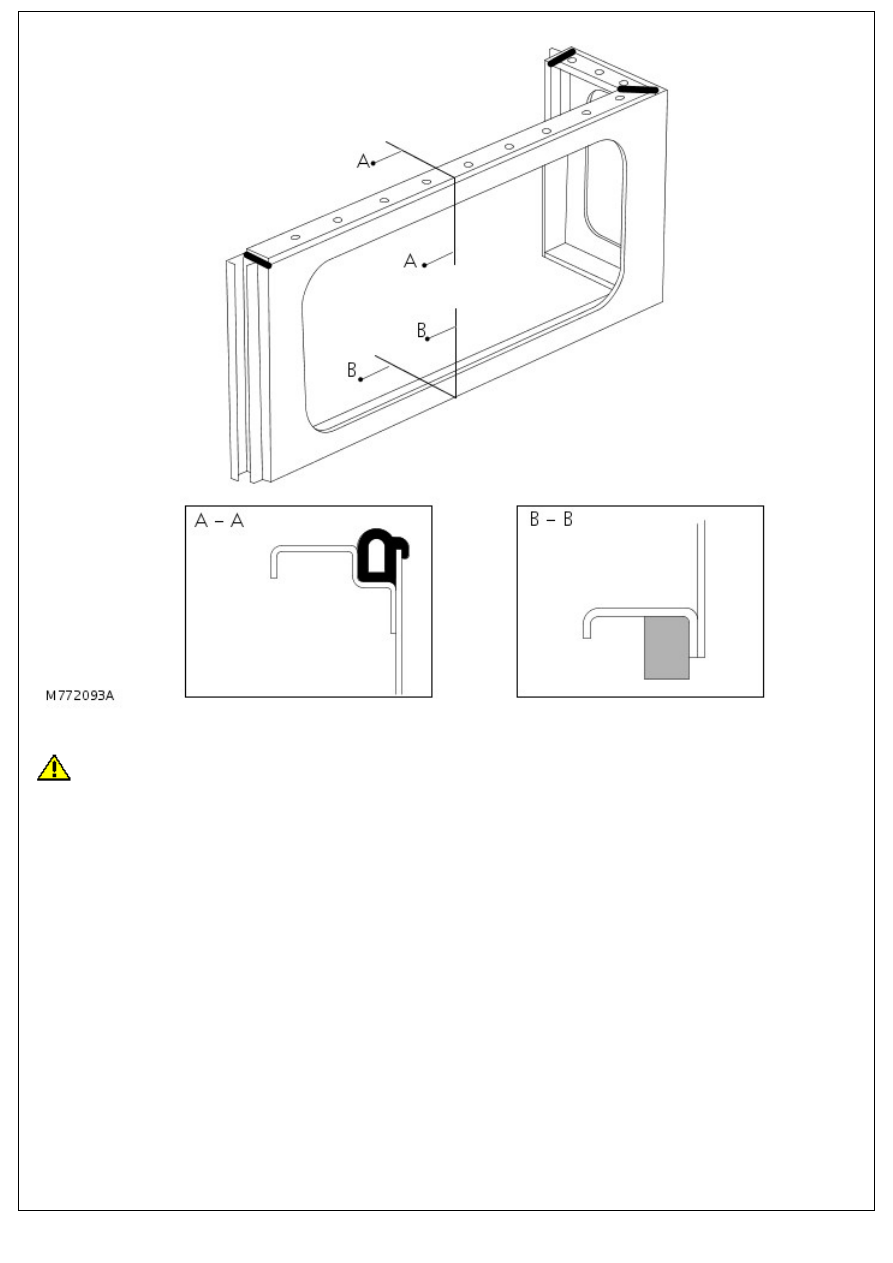Defender. Manual - part 291

Section A-A shows a rubber seal in position on the body side rear upper assembly.
CAUTION: Ensure rubber seal is correctly seated into channel.
Section B-B shows a foam seal located on the bottom edge of the body side rear upper assembly. It is fixed to the panel
using double sided tape.
Body side lower